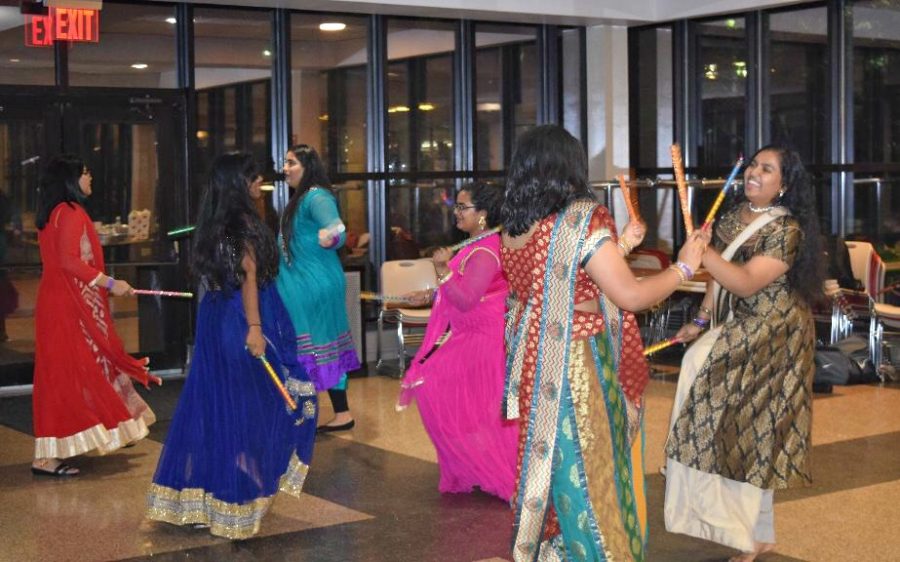Dozens of St. John’s University students gathered at Marillac Terrace on Oct. 28 to celebrate the arrival of Navaratri, a nine-night festival that Hindus observe during autumn every year.
The event that was held on campus was referred to as a “garba” or Gujrati dance, and was organized by SJU’s Indian Subcontinent Student Organization (ISSO) as an opportunity to collectively celebrate the traditions that are associated with Navaratri.
It was surprising to witness the turnout of the student-run event considering it was held on a Saturday night, an evening that most college students prefer to spend off campus.
The events of the night consisted of introductions to the members of ISSO, appetizers, live-singing, a cultural dance performed by SJU’s South-Asian Dance Team (RAAZ), a taste of authentic indian cuisine, a sari-wrapping contest, group prayer, and finally, a traditional garba (dance) in which everyone was welcome participate in regardless of their faith or culture.
As a South-Asian, it pleases me to attend events where the traditions of a culture I am familiar with are celebrated.
Although I am a Pakistani-Muslim, I grew up being accustomed to the songs, food and traditions of my neighboring country, India. Many Pakistanis are used to the sounds of Bollywood, the food that is similarly spiced to ours, and the clothing that is stitched and embroidered the same way that ours are designed.
Considering that Pakistan was a part of India until 1947, a vast amount of our culture is inspired by Indian traditions; with religion, however, being the only thing that distinctly separates the two cultures from each other.
It was quite delightful observing, listening and tasting the parts that essentially highlight the embodiment of Indian culture and religion.
Regardless of my own background and ethnicity, I enjoyed singing along to the songs that I was raised listening to and eating the food that was cooked and seasoned the way that I associate with “being home.”
The hall was decorated colorfully, the students in attendance were dressed extravagantly and it was refreshing to be sitting within a place that vibrated genuine, pure energy that is rare to find in most occasions.
I want to commend SJU’s ISSO for the ability to make anyone that attended, regardless of their background, feel welcome and for encouraging all to open up to the culture in a way that we weren’t used to.
The music, food and dances were all exhilarating to participate in. I would like to see more representation of South Asian culture on campus through student-run events and activities.
I highly encourage students from here on out to take a stronger initiative to push and promote events similar to this on campus through better forms of advertisement.
I was initially informed of ISSO’s Garba after observing a flyer posted on the staircase wall on the second floor of the D’Angelo Center (DAC) on campus.
I give credit to the people responsible for creating the colorful flyer — however, I admit that I wouldn’t have taken the time to observe its content if it were advertised in black and white, for example.
Increased promotion of these such events is important for club members to engage in because doing so allows other South Asian students, such as myself, to feel as if they have a stronger form of representation on campus.
The festivities of Garba positively rejuvenated me in a way that I find hard to describe, therefore I hope to see more of an initiative to advertise the occasion of South Asian cultural events at SJU.








